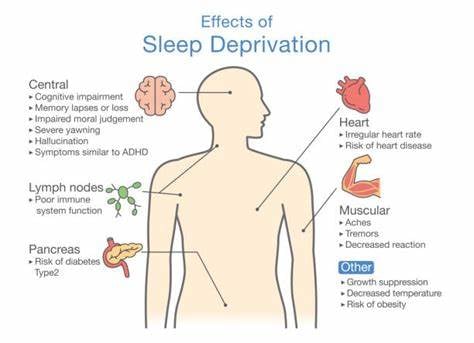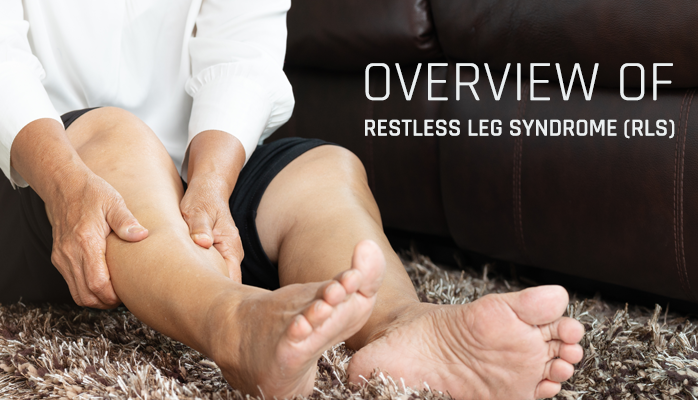What is Restless Leg Syndrome (RLS)?
Restless leg syndrome (RLS) is a sleep disorder caused by nervous system, and is characterized by uncomfortable sensations in the legs and other extremities during the night. RLS usually causes enough discomfort to interfere with sleep, causing sleep deprivation.
The symptoms of RLS all have one thing in common: discomfort in the legs, though it can also occur in other extremities. This discomfort can be mild, uncomfortable, and even intolerable. Frustratingly, your RLS can:
- Come and go over long periods of time
- Be chronic (all the time)
- Be intermittent – some nights RLS symptoms appear and some nights they don’t
This can make it difficult to identify that there is even a problem or a sleep disorder present. Continue reading to learn more about RLS and how to treat it.
Why is RLS a Problem, Especially in Alaska?
The main problem associated with RLS is sleep deprivation, which can range from minor to severe depending on the severity of RLS. The reason RLS causes sleep deprivation is that one wakes up and move their leg/limbs to relieve the discomfort.
It’s a vicious cycle because sleep deprivation can, in turn, worsen your RLS symptoms. Combine this with other compounding factors, such as age or lack of exercise, and RLS can become intolerable.
Mild or intermittent RLS can also be a problem, as it is likely to go undetected or be misdiagnosed. This can lead to mild but chronic sleep deprivation and observable symptoms.
RLS can especially be a problem in Alaska during the winter because many of Alaskans tend to be less active due to the cold and darkness. Unless one is diligent about working out inside or doing outside activities regularly, they are getting less exercise than in the summer. Less exercise can exacerbate RLS, or even trigger its onset.
What are Symptoms of RLS?
People describe the discomfort of RLS (i.e., the symptoms of RLS) as any of the following in the legs, and sometimes other extremities, at night:
- Aching
- Throbbing
- Burning
- Cramping (especially in calves)
- Jerking
- Buzzing
- Vibrating
- Itchy
- Pins and needles
- Creepy crawly
- Irresistible urge to move your legs to relieve the discomfort
The positive about moderate to severe cases of RLS is that more severe symptoms are often easy to identify and diagnose. Mild symptoms, on the other hand, may go unnoticed or undiagnosed.
The primary danger of RLS is that it can lead to moderate or severe sleep deprivation, which has many health side effects of its own:

What Causes RLS?
The causes of restless leg syndrome are not known for sure. Recent science has shed some light on strong correlations between RLS and a number of potential causes:
- Genes are thought to play a role: nearly half of people with RLS have a family member who also has it
- Certain diseases induce symptoms of RLS, such as anemia, Parkinson’s, and diabetes
- Some medications may make RLS symptoms worse, such as anti-nausea drugs or antipsychotic drugs
- Pregnancy may trigger symptoms, especially in last trimester
- Sleep deprivation may trigger symptoms or worsen them
- It affects both sexes but is more common in women
- It may begin at any age (even in young children), but people who are severely affected are generally middle aged or older
In some cases, like RLS onset during pregnancy or after sleep deprivation, RLS may go away naturally. In other cases, RLS may be a chronic problem without treatment.
Treatments for Restless Leg Syndrome
Unfortunately, there are no direct treatment options for people with RLS. Fortunately, there are preventative measures that have proven very successful for many people with RLS, and are mostly lifestyle in nature:
- Beginning regular exercise
- Stretch, such as with yoga)
- Developing good sleeping patterns/habits
- Reducing the use of stimulants
- Reducing the consumption of alcohol and tobacco
Non-lifestyle treatment methods include:
- Leg massages
- Hot baths and/or ice packs
- A vibrating pad
In some cases medications may be used, but the effects may relieve or worsen RLS (results are sporadic) and the effectiveness may lessen over time.
If you live in Alaska and are concerned that you may be struggling with RLS, take this free online sleep test to get in contact with one of our sleep health professionals.


